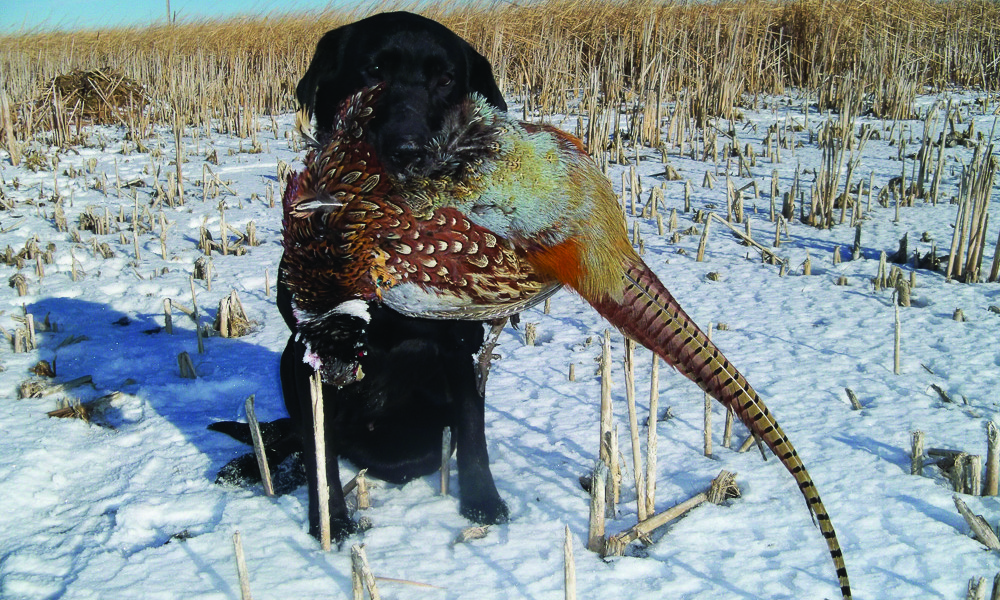December is a time of honest assessment—and some of the best hunting of the year
It’s transition time for most gun dog owners. They’ve had several months of upland or waterfowl field trips, but now switch gears and go big game hunting.
For those owners, it’s also a good time of the year to reflect and make some notes on the type and the quality of the hunts they’ve had with their dogs before heading out for late-season upland action. It’s a good time to critique the problems encountered in the field. Did the dog do the fundamentals of sit, stay, and come under the conditions of field distractions—low-flying birds, shots we missed, when the jackrabbit got up in his nose. More importantly, did the dog quarter really well and find birds consistently? What this will reveal is the prospects for late-season hunting. If we had the early-season field hunting problems, they will be magnified in lateseason.
Whether it’s pheasants or sharptails, we’re going to be hunting the best, the most wily birds. Complicating things, harsher weather and less-than ideal scenting conditions. If the dog doesn’t have the foundation, now’s the time to critique the problems we’re having. Owners can work on those areas during the winter, spring or summer.
Correction and training isn’t a function of a few days, it’s a function of repetition in training. Some are quick learners, but most, in general, need a lot of field work. Being honest in your assessment is important, too. There is a tendency in some dog owners to always remember the one good retrieve and forget about the half-dozen times the dog has royally screwed up.
The key to late-season hunting success is to go with smaller groups or by yourself, that’s based on the premise that a smaller group is quieter. Success in the field can be directly related to being quiet. I like to use the term stealth hunting. No door slams. No whistles or hollering at dogs. You can’t be continually hollering. Your dogs must be obedient, know hand signals, and be very controlled.
The birds that are alive in November and December have learned their escape routes and have been pushed to heavy cover, but that doesn’t rule out a good hunt. In the late season, you can have a quality hunt. The conditions are tougher, but there aren’t as many hunters. But that’s based on the assumption that your dog will go into heavy cover. Late in the year, upland game has moved from secondary, low cover loafing areas to dense cattail marshes and heavy CRP land. You have to have a dog that can work this kind of cover.
One of the most important things owners should remember about hunting in the late season is that they and their dogs are at the mercy of Mother Nature. Snow makes for wear and tear on a dog’s feet, especially ones that have a lot of hair between their toes. To avoid creating an area where the snow packs in and accumulates, keep the toe hair clipped. And don’t forget the cold. In 15 to 20 below weather, there have been instances where dogs have died because of freezing their lungs. They are susceptible to extreme cold. You have to be sensitive to hunting the late season.
